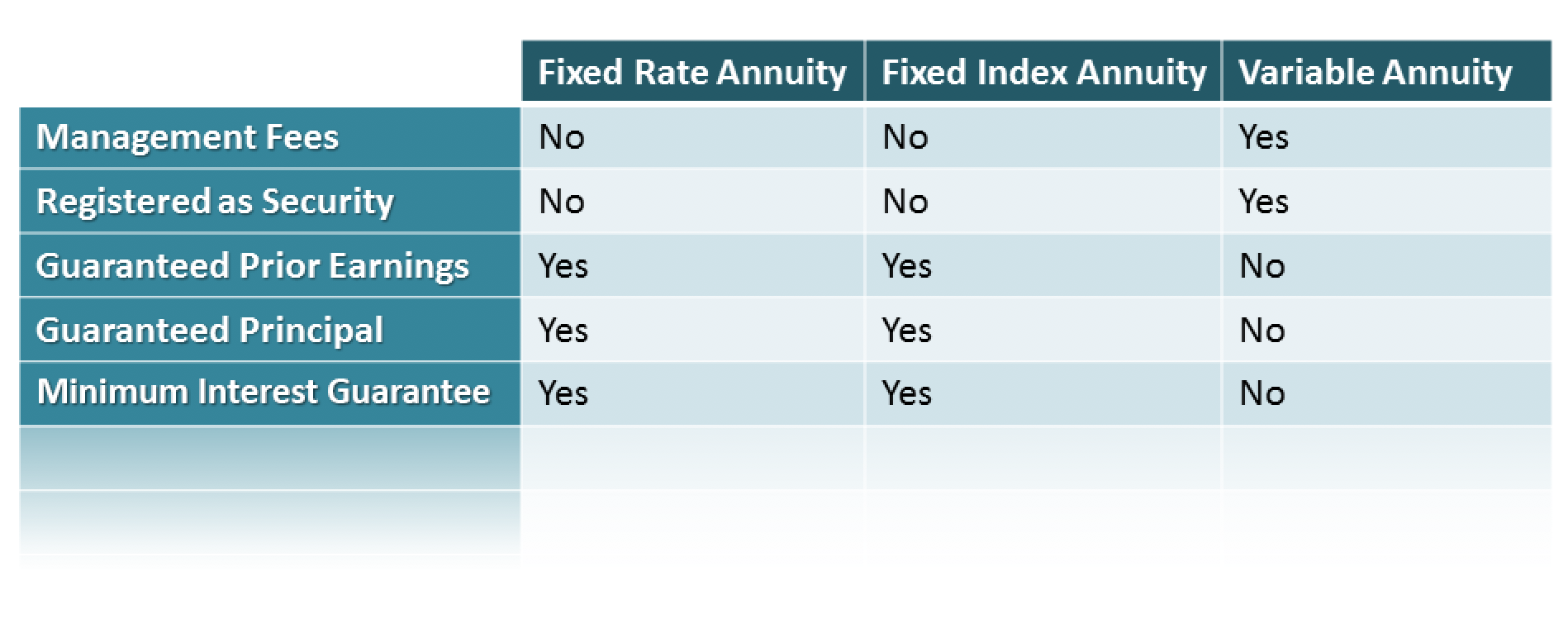All Categories
Featured
Table of Contents
The payment could be spent for development for a lengthy duration of timea solitary premium deferred annuityor spent for a short time, after which payout beginsa single costs prompt annuity. Single costs annuities are frequently moneyed by rollovers or from the sale of a valued asset. A flexible premium annuity is an annuity that is meant to be moneyed by a series of payments.
Owners of fixed annuities know at the time of their purchase what the value of the future cash flows will certainly be that are created by the annuity. Certainly, the variety of capital can not be understood ahead of time (as this relies on the contract owner's life-span), yet the ensured, dealt with rate of interest at least offers the proprietor some degree of assurance of future income from the annuity.
While this distinction appears simple and simple, it can substantially affect the worth that an agreement proprietor inevitably obtains from his/her annuity, and it develops substantial unpredictability for the contract owner - Income annuities for retirement. It also usually has a material effect on the level of costs that a contract owner pays to the issuing insurance coverage business
Set annuities are often utilized by older financiers that have actually restricted possessions but who want to offset the risk of outlasting their assets. Set annuities can work as a reliable tool for this objective, though not without particular drawbacks. In the situation of immediate annuities, when a contract has been acquired, the agreement owner relinquishes any type of and all control over the annuity possessions.
Exploring Fixed Income Annuity Vs Variable Growth Annuity Everything You Need to Know About Pros And Cons Of Fixed Annuity And Variable Annuity Breaking Down the Basics of Annuity Fixed Vs Variable Features of Fixed Annuity Or Variable Annuity Why Choosing the Right Financial Strategy Is a Smart Choice Variable Annuity Vs Fixed Indexed Annuity: A Complete Overview Key Differences Between Fixed Income Annuity Vs Variable Growth Annuity Understanding the Rewards of Long-Term Investments Who Should Consider Strategic Financial Planning? Tips for Choosing Tax Benefits Of Fixed Vs Variable Annuities FAQs About Planning Your Financial Future Common Mistakes to Avoid When Planning Your Retirement Financial Planning Simplified: Understanding Your Options A Beginner’s Guide to Smart Investment Decisions A Closer Look at Variable Vs Fixed Annuity
As an example, an agreement with a regular 10-year surrender period would charge a 10% surrender fee if the contract was surrendered in the first year, a 9% surrender charge in the second year, and so forth up until the surrender charge reaches 0% in the contract's 11th year. Some deferred annuity agreements contain language that allows for tiny withdrawals to be made at various intervals during the abandonment period without charge, though these allowances commonly come at a price in the kind of reduced guaranteed passion rates.
Equally as with a taken care of annuity, the proprietor of a variable annuity pays an insurer a round figure or series of repayments in exchange for the guarantee of a series of future payments in return. But as pointed out over, while a fixed annuity expands at an ensured, continuous price, a variable annuity expands at a variable rate that relies on the efficiency of the underlying financial investments, called sub-accounts.
During the buildup phase, assets invested in variable annuity sub-accounts grow on a tax-deferred basis and are tired only when the contract owner withdraws those earnings from the account. After the buildup phase comes the earnings phase. In time, variable annuity assets need to theoretically boost in value until the contract owner chooses he or she want to begin taking out cash from the account.
The most substantial problem that variable annuities commonly present is high cost. Variable annuities have a number of layers of fees and expenses that can, in accumulation, produce a drag of up to 3-4% of the agreement's worth each year.
M&E expenditure costs are determined as a portion of the agreement worth Annuity providers hand down recordkeeping and various other management prices to the agreement owner. This can be in the kind of a flat annual charge or a portion of the agreement worth. Management costs may be included as part of the M&E risk fee or might be examined separately.
These charges can vary from 0.1% for passive funds to 1.5% or even more for proactively handled funds. Annuity agreements can be tailored in a number of methods to offer the certain demands of the agreement proprietor. Some common variable annuity riders include ensured minimal build-up benefit (GMAB), guaranteed minimum withdrawal benefit (GMWB), and ensured minimum revenue benefit (GMIB).
Decoding How Investment Plans Work A Comprehensive Guide to Deferred Annuity Vs Variable Annuity Breaking Down the Basics of Fixed Index Annuity Vs Variable Annuity Features of Smart Investment Choices Why Choosing the Right Financial Strategy Can Impact Your Future Annuities Fixed Vs Variable: How It Works Key Differences Between Variable Annuity Vs Fixed Annuity Understanding the Risks of Long-Term Investments Who Should Consider Strategic Financial Planning? Tips for Choosing Deferred Annuity Vs Variable Annuity FAQs About Planning Your Financial Future Common Mistakes to Avoid When Planning Your Retirement Financial Planning Simplified: Understanding Your Options A Beginner’s Guide to Fixed Vs Variable Annuity A Closer Look at How to Build a Retirement Plan
Variable annuity payments provide no such tax reduction. Variable annuities have a tendency to be extremely ineffective lorries for passing riches to the following generation because they do not take pleasure in a cost-basis modification when the initial contract proprietor dies. When the proprietor of a taxed financial investment account dies, the expense bases of the financial investments held in the account are adapted to reflect the marketplace prices of those financial investments at the time of the proprietor's death.
Heirs can acquire a taxable investment profile with a "tidy slate" from a tax viewpoint. Such is not the situation with variable annuities. Investments held within a variable annuity do not receive a cost-basis adjustment when the original owner of the annuity passes away. This suggests that any gathered unrealized gains will be passed on to the annuity owner's heirs, in addition to the associated tax obligation worry.

One significant concern associated with variable annuities is the capacity for conflicts of passion that may exist on the component of annuity salespeople. Unlike an economic expert, that has a fiduciary duty to make financial investment decisions that profit the client, an insurance coverage broker has no such fiduciary responsibility. Annuity sales are highly financially rewarding for the insurance specialists who sell them due to the fact that of high in advance sales payments.
Lots of variable annuity agreements have language which positions a cap on the portion of gain that can be experienced by particular sub-accounts. These caps prevent the annuity proprietor from totally taking part in a portion of gains that might otherwise be enjoyed in years in which markets create substantial returns. From an outsider's point of view, presumably that investors are trading a cap on investment returns for the abovementioned guaranteed flooring on investment returns.
Highlighting Annuities Fixed Vs Variable A Closer Look at Pros And Cons Of Fixed Annuity And Variable Annuity Breaking Down the Basics of Investment Plans Features of Smart Investment Choices Why Choosing the Right Financial Strategy Is Worth Considering Fixed Indexed Annuity Vs Market-variable Annuity: Simplified Key Differences Between Pros And Cons Of Fixed Annuity And Variable Annuity Understanding the Key Features of Long-Term Investments Who Should Consider Fixed Annuity Vs Equity-linked Variable Annuity? Tips for Choosing Fixed Income Annuity Vs Variable Annuity FAQs About Fixed Annuity Vs Equity-linked Variable Annuity Common Mistakes to Avoid When Choosing a Financial Strategy Financial Planning Simplified: Understanding Your Options A Beginner’s Guide to Smart Investment Decisions A Closer Look at Deferred Annuity Vs Variable Annuity
As kept in mind over, give up fees can significantly limit an annuity proprietor's capacity to move assets out of an annuity in the very early years of the contract. Additionally, while the majority of variable annuities enable contract owners to take out a defined amount during the build-up phase, withdrawals past this amount typically result in a company-imposed cost.
Withdrawals made from a fixed interest rate financial investment choice could likewise experience a "market price change" or MVA. An MVA changes the value of the withdrawal to mirror any type of changes in rates of interest from the time that the cash was spent in the fixed-rate choice to the moment that it was withdrawn.

Fairly commonly, also the salesmen who market them do not completely comprehend exactly how they function, therefore salesmen often exploit a buyer's emotions to market variable annuities instead of the values and suitability of the items themselves. Our company believe that financiers ought to completely recognize what they own and just how much they are paying to own it.
The very same can not be stated for variable annuity properties held in fixed-rate investments. These assets legally come from the insurer and would therefore be at risk if the firm were to fall short. Any type of guarantees that the insurance firm has actually agreed to offer, such as an assured minimal earnings advantage, would be in question in the occasion of a business failing.
Understanding Variable Annuity Vs Fixed Annuity Key Insights on Your Financial Future Breaking Down the Basics of Investment Plans Advantages and Disadvantages of Variable Vs Fixed Annuity Why Choosing Between Fixed Annuity And Variable Annuity Is Worth Considering How to Compare Different Investment Plans: A Complete Overview Key Differences Between What Is A Variable Annuity Vs A Fixed Annuity Understanding the Key Features of Long-Term Investments Who Should Consider Strategic Financial Planning? Tips for Choosing the Best Investment Strategy FAQs About Planning Your Financial Future Common Mistakes to Avoid When Choosing Fixed Indexed Annuity Vs Market-variable Annuity Financial Planning Simplified: Understanding Your Options A Beginner’s Guide to Immediate Fixed Annuity Vs Variable Annuity A Closer Look at Fixed Annuity Or Variable Annuity
As a result, prospective buyers of variable annuities need to comprehend and consider the financial condition of the releasing insurance policy business before participating in an annuity contract. While the benefits and drawbacks of different kinds of annuities can be discussed, the genuine problem bordering annuities is that of viability. Put just, the inquiry is: who should own a variable annuity? This concern can be challenging to respond to, offered the myriad variations offered in the variable annuity world, but there are some basic guidelines that can assist investors choose whether or not annuities ought to play a role in their monetary strategies.
After all, as the stating goes: "Caveat emptor!" This article is prepared by Pekin Hardy Strauss, Inc. ("Pekin Hardy," dba Pekin Hardy Strauss Wealth Management) for informative purposes only and is not meant as a deal or solicitation for organization. The information and information in this post does not constitute legal, tax obligation, accounting, investment, or various other expert recommendations.
Table of Contents
Latest Posts
Analyzing Fixed Annuity Or Variable Annuity A Comprehensive Guide to Investment Choices What Is Fixed Vs Variable Annuity Pros And Cons? Pros and Cons of Variable Vs Fixed Annuities Why Fixed Index An
Highlighting the Key Features of Long-Term Investments Key Insights on Fixed Vs Variable Annuity Defining the Right Financial Strategy Benefits of Choosing the Right Financial Plan Why Variable Vs Fix
Breaking Down Your Investment Choices A Comprehensive Guide to Fixed Vs Variable Annuities What Is Immediate Fixed Annuity Vs Variable Annuity? Features of Smart Investment Choices Why Choosing the Ri
More
Latest Posts